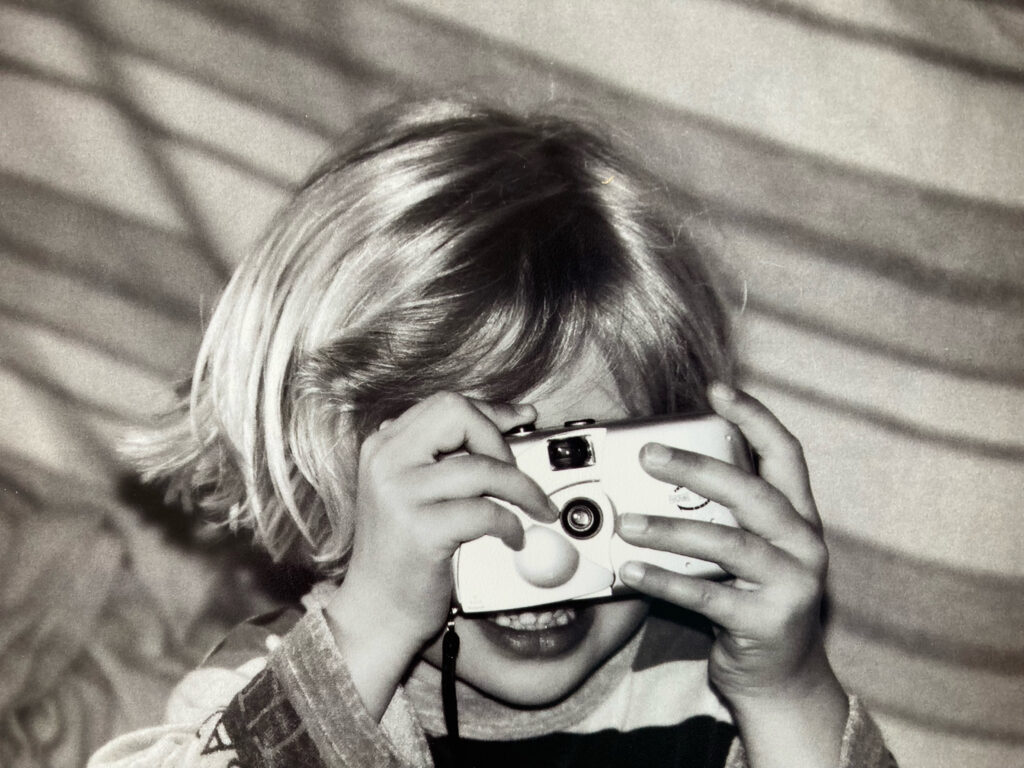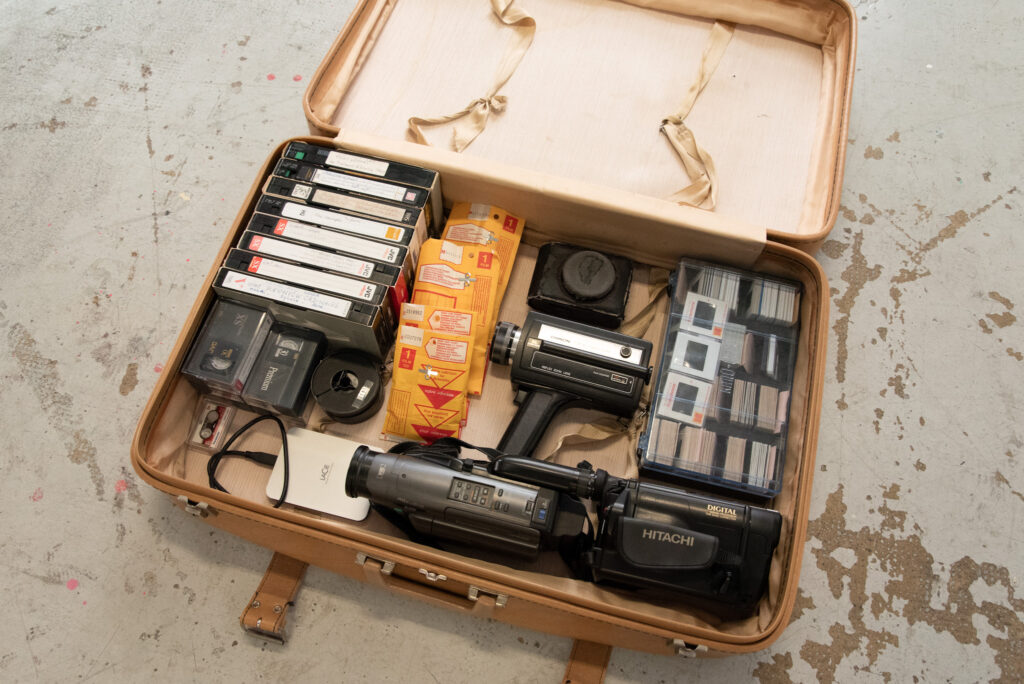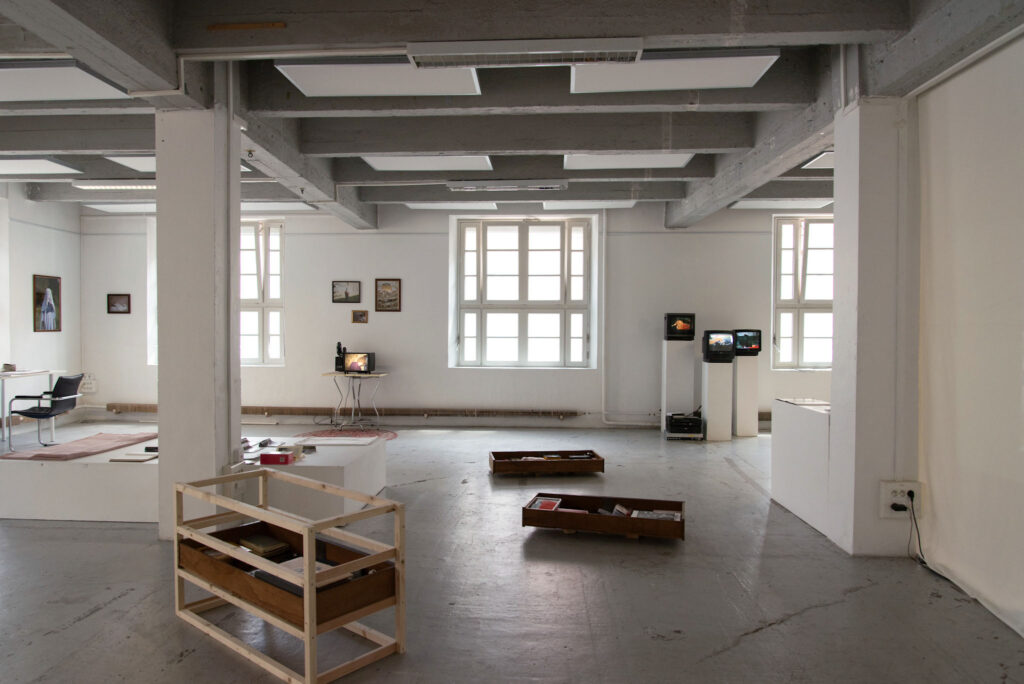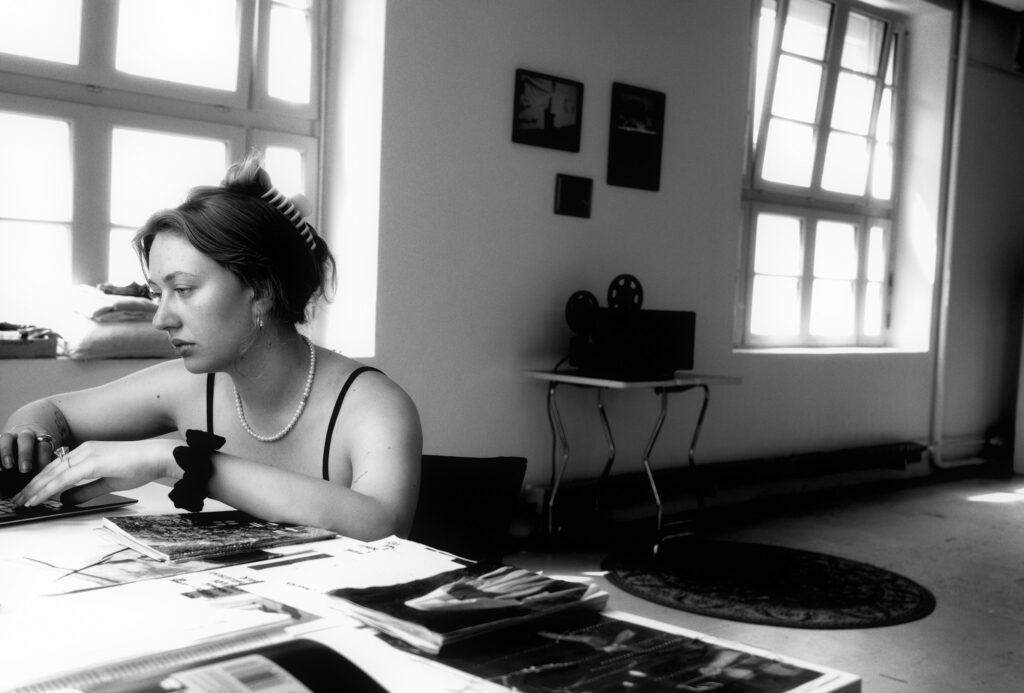DNSEP 2025 Design des média avec les félicitations du jury
Tutorat théorique : Victor Guégan / Tutorat plastique : Laurent Baude
Contact : cleadelemonteyracle@gmail.com / @cleadlmbis
Artiste photographe vidéaste
Recueil de Morceaux Choisis, ces mots, ce sont ceux de mon grand-père, sur une cassette enregistrée en septembre 2000, que j’ai découverte des années plus tard. C’est à la fois mon héritage familial et le titre de mon projet.


Je travaille sur la question de la mémoire, de la transmission et de l’archive de soi dans un fourmillement de médias qui définissent le souvenir.
Ma pratique artistique s’articule autour de l’image, principalement avec des médiums analogiques de l’argentique, au film Super 8 en passant par la vidéo VHS mais aussi en numérique, le montage, l’installation et l’édition.
Mes travaux visent à collecter et à fictionnaliser les archives de ma famille, ainsi que mes archives personnelles.
Depuis petite, je photographie, je filme et je collectionne des objets, des mots, des images qui m’ont marquée et qui racontent mon histoire. Avec les années et une peur grandissante du temps qui meurt, mon protocole s’est précisé afin de conscientiser et déployer dans l’espace cet archivage du sensible.
Dans le cadre de cette recherche, j’ai mis la main sur des dizaines d’heures de vidéo filmées par mon grand-père maternel entre 1975 et 1993, puis par mes parents dans les années 2000. C’est en rassemblant toutes ces images qu’il m’est apparu que ma famille, moi y compris, avions un rapport de fascination avec la caméra. Elle a toujours été un objet présent dans ma vie, elle est familiale et familière. J’ai composé un récit fragmentaire d’intimité familiale, de l’intimité de ma famille mais aussi de la famille à travers un recueil d’images et d’objets-souvenirs qui sont à la fois des outils et la représentation physique de ces moments vécus et du temps qui passe. Du geste introspectif à un commun qui me semble partagé.
Ces archives familiales viennent compléter l’archive de ma “petite mémoire”, une expression que j’emprunte à l’artiste Christian Boltabnski et qu’il définissait lui-même comme « une mémoire affective, un savoir quotidien. Cette petite mémoire, qui forme notre singularité, est extrêmement fragile puisqu’elle disparaît avec la mort“. L’artiste se considérait lui-même comme un archiviste de sa petite mémoire tout en essayant de “mettre sa vie en boîte” tout en conscientisant que “lutter contre l’oubli et la disparition, est une chose qui est totalement impossible […] La destruction et l’usure font partie de la vie.”


Ma pratique photographique interroge ce que l’on voile et ce que l’on dévoile. Elle invite à observer, presque toujours en cachette, des personnages absorbés dans des actions ou des moments de la vie quotidienne entre intimité et extimité.
Je collecte, j’adopte, je me réapproprie, je mets en forme et en espace des images qui ne sont pas toujours les miennes, avec des médiums qui n’appartiennent pas à l’époque dans laquelle je grandis. Le Super 8 est considéré comme un “ dead media”, c’est-à-dire voué à disparaître soit par des contraintes physiques, soit par nécessité sociétale de survie face à l’épuisement des ressources. Ce sont des systèmes techniques appelés “zombie média”, des technologies théoriquement “mortes” mais ramenées à la vie pour des usages plus ou moins éloignés de ceux pour lesquels ils ont été conçus. Cette réutilisation de ces médias morts nous invite à revoir notre conception des technologies et à constater la coexistence du “vieux” et du “moderne” dans nos sociétés. Ces médias participent à la circulation du temps et de la mémoire. La technologie n’est pas seulement ancrée dans le temps: elle a son propre temps de fonctionnement, qui dépasse largement leur valeur d’usage centrée sur l’humain. Dans ma pratique, la réactivation du médium Super 8 me permet d’expérimenter l’image et la matière comme une danse. Au sens propre comme figuré, en jouant avec le sensible du film.
Je navigue entre ces médiums et dans le temps en mêlant à mes pratiques un travail d’écriture sous forme de carnets de bord quotidien entre journal intime, recherche et documentation.

Recueil de Morceaux Choisis, these words are my grandfather’s, recorded on a cassette in September 2000, which I discovered years later. They are both a family inheritance and the title of my project.
My work explores the themes of memory, transmission, and self-archiving through a constellation of media that shape remembrance.
My artistic practice revolves around the image, primarily through analog formats—from film photography to Super 8 and VHS video—as well as digital tools, editing, installation, and publishing.
My work aims to collect and fictionalize my family archives, as well as my own personal records.
Since I was a child, I have photographed, filmed, and collected objects, words, and images that marked me and tell my story. Over time, and with a growing fear of time slipping away, my process has become more defined, in an effort to consciously translate and spatialize this archiving of the sensitive.
As part of this research, I uncovered dozens of hours of video filmed by my maternal grandfather between 1975 and 1993, and later by my parents in the 2000s.
In gathering all these images, I realized that my family—including myself—has always had a kind of fascination with the camera. It has always been a presence in my life, both familial and familiar. I composed a fragmented narrative of family intimacy—of my family’s intimacy, but also of the family, through a collection of images and memory-objects that are both tools and physical representations of lived moments and passing time. From introspection to a shared experience that I believe is collective.
These family archives complement the archive of my « small memory, » an expression borrowed from artist Christian Boltanski, who described it as « an affective memory, an everyday knowledge. This small memory, which forms our uniqueness, is extremely fragile because it disappears with death. »
The artist saw himself as an archivist of this small memory, trying to « put his life in a box » while acknowledging that « fighting against forgetting and disappearance is completely impossible […] Destruction and erosion are part of life.”
My photographic practice questions what we conceal and what we reveal. It invites the viewer to observe—often secretly—characters absorbed in actions or everyday moments, navigating between intimacy and extimacy.
I collect, adopt, reclaim, and give shape and space to images that are not always my own, using media that do not belong to the time in which I grew up.
Super 8 is considered a “dead media,” destined to disappear due to physical limitations or societal shifts driven by resource scarcity. These are what we call “zombie media”—technologies that are theoretically obsolete, brought back to life for purposes often far removed from their original use. This reuse challenges our perception of technology and reveals the coexistence of the « old » and the « modern » in our societies. These media contribute to the circulation of time and memory. Technology is not only anchored in time; it has its own temporal rhythm that goes far beyond its human-centered utility. In my practice, reactivating the Super 8 medium allows me to experiment with image and material as a kind of dance—both literally and figuratively—playing with the tactile and emotional qualities of film.
I navigate between these media and across time, integrating into my practice a form of writing—daily logbooks that merge personal diary, research, and documentation.